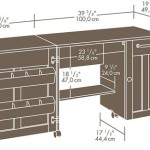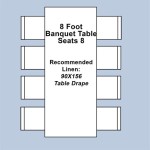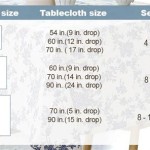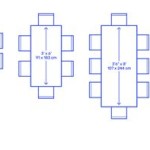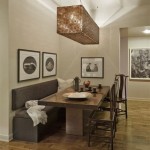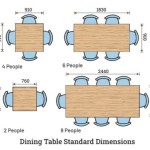Expandable Dining Room Tables For Small Spaces: Maximizing Functionality
The challenge of furnishing a small dining room often revolves around maximizing space without sacrificing functionality or style. A conventional, large dining table can dominate a limited area, making it feel cramped and restricting movement. Expandable dining room tables offer a practical solution to this problem, providing a flexible surface that can be adjusted to accommodate varying numbers of diners. These tables are specifically designed to expand or contract based on immediate needs, making them ideal for individuals or families who frequently host gatherings but lack the square footage for a permanently large table.
Expandable dining tables come in a wide array of designs, materials, and mechanisms. The selection process should involve careful consideration of factors such as the available space, aesthetic preferences, and the typical number of people who will use the table regularly. Understanding the different types of expandable tables and their respective benefits is crucial for making an informed purchasing decision.
Types of Expansion Mechanisms
Several mechanisms are commonly employed in expandable dining tables, each offering a unique approach to increasing the table's surface area. Understanding these mechanisms allows for selecting a table that best suits individual needs and physical capabilities.
Leaf Storage: This is perhaps the most common type of expandable table. It features one or more leaves that are stored separately, either within the table itself or in a closet or other storage area. When needed, the table is split in the middle, and the leaf or leaves are inserted to extend the surface. Tables with self-storing leaves offer added convenience, eliminating the need to find storage elsewhere.
Butterfly Leaf: A butterfly leaf is hinged and folds directly under the tabletop. To expand the table, the tabletop is split, and the butterfly leaf is unfurled from its concealed position. This mechanism is often favored for its ease of use and the fact that the leaf remains attached to the table, preventing misplacement.
Drop Leaf: Drop leaf tables have one or two leaves that are hinged to the sides of the main tabletop. These leaves can be raised and supported by folding brackets or legs to increase the dining surface. When not in use, the leaves are dropped down, making the table more compact. Drop leaf tables are particularly well-suited for very small spaces where flexibility and space-saving are paramount.
Extension Rails: Some tables utilize extension rails that slide out from under the tabletop. These rails provide support for additional leaves that are then inserted to expand the table. This mechanism often allows for multiple leaves to be added, providing a significant increase in surface area.
Each mechanism has its own advantages and disadvantages. Leaf storage tables offer versatility but require storage space for the leaves. Butterfly leaf tables are convenient but may be limited in the amount of expansion they provide. Drop leaf tables are space-saving but may not be as sturdy as other types. Extension rail tables offer substantial expansion but can be more complex to operate.
Material Considerations
The material of an expandable dining table plays a significant role in its durability, aesthetics, and maintenance requirements. Common materials include wood, metal, glass, and laminate, each with its own distinct characteristics.
Wood: Solid wood tables are known for their strength, durability, and natural beauty. Hardwoods such as oak, maple, and walnut are commonly used for dining tables due to their resistance to scratches and dents. Wood tables can be stained or painted to match various interior design styles. However, wood is susceptible to moisture damage and requires regular maintenance to prevent warping or cracking.
Metal: Metal tables, often made of steel or aluminum, offer a sleek and modern aesthetic. They are typically more resistant to scratches and stains than wood tables and require less maintenance. Metal tables can be paired with wood or glass tabletops for added visual interest. However, metal can feel cold and industrial in some settings.
Glass: Glass tabletops provide a contemporary and airy look. They are easy to clean and resistant to stains. Tempered glass is a strong and durable option for dining tables. However, glass can be prone to scratches and fingerprints and may require frequent cleaning to maintain its appearance. The expansion mechanisms on glass-topped tables are usually supported by metal or wooden frames.
Laminate: Laminate tables consist of a thin layer of decorative material bonded to a core of particleboard or MDF (medium-density fiberboard). Laminate tables are affordable, easy to clean, and available in a wide range of colors and patterns. High-pressure laminate is more resistant to scratches and stains than low-pressure laminate. However, laminate tables are generally less durable than solid wood or metal options.
The choice of material should be based on individual preferences, budget, and lifestyle. Wood offers warmth and durability, metal provides a modern edge, glass creates a sense of spaciousness, and laminate offers affordability and versatility.
Design and Style Integration
An expandable dining table should complement the overall design aesthetic of the dining room or living space. The table's style, shape, and finish should align with existing furniture and décor to create a cohesive and harmonious environment.
Shape: Expandable dining tables are available in various shapes, including rectangular, square, round, and oval. Rectangular tables are well-suited for long, narrow spaces. Square tables are ideal for smaller dining areas. Round tables promote conversation and are often favored for intimate gatherings. Oval tables offer a blend of the benefits of rectangular and round tables.
Style: The style of an expandable dining table should reflect personal taste and complement the existing décor. Modern tables often feature clean lines and minimalist designs, while traditional tables may incorporate ornate carvings and details. Contemporary tables blend elements of both modern and traditional styles. Industrial tables showcase raw materials such as metal and wood.
Finish: The finish of a dining table refers to the surface treatment applied to the material. Common finishes include stains, paints, varnishes, and lacquers. Stains enhance the natural grain of wood, while paints provide a solid color finish. Varnishes and lacquers protect the surface from scratches and moisture. The choice of finish should be based on aesthetic preferences and the desired level of durability.
When selecting an expandable dining table, consider the existing furniture in the room. If the room has a modern aesthetic, a table with clean lines and a metal or glass finish would be a suitable choice. If the room has a traditional aesthetic, a table with ornate carvings and a wood finish would be more appropriate. The goal is to create a cohesive and visually appealing space.
Furthermore, consider the size and shape of the room. In a small, square room, a round or square table may be the best option. In a long, narrow room, a rectangular table may be more suitable. The table should be proportionate to the size of the room and allow for comfortable movement around the table.
The selection of an expandable dining room table for a small space requires a thoughtful approach. Careful consideration of the expansion mechanism, material, and design style will ensure that the chosen table meets both functional and aesthetic requirements, maximizing the utility of the limited space available. Proper research and assessment of individual needs are crucial for making a well-informed decision that will enhance the dining experience for years to come.
Ultimately, the best expandable dining table for a small space is one that combines functionality, durability, and style. It should be easy to use, durable enough to withstand daily wear and tear, and aesthetically pleasing enough to complement the overall design of the room. By carefully considering these factors, individuals can find the perfect expandable dining table to meet their needs and make the most of their small dining space.

Space Saving Transforming Tables Expand Furniture

41 Extendable Dining Tables To Maximize Your Space

Expanding Tables For Small Spaces Furniture Dining Table Space

Drop Leaf Kitchen Table For 2 6 People Small Folding Dining With Storage Rack And 1 Inches Thick Top Extendable Apartment Spaces Rustic Brown Com

Homcom Extending Kitchen Table For Six Drop Leaf Tables Small Spaces Folding Dining Natural Aosom

We Review The Junior Giant Table From Expand Furniture Expanding Dining

Whole Modern Early Settler Extendable Dining Tables For Small Spaces China Table Set Made In Com

Expandable Dining Tables The Secret To Making Guests Feel Welcome

Modern Extendable Dining Table Rectangle Sideboard With Storage In White Homary

Small Spaces Dining Tables West Elm
Related Posts


